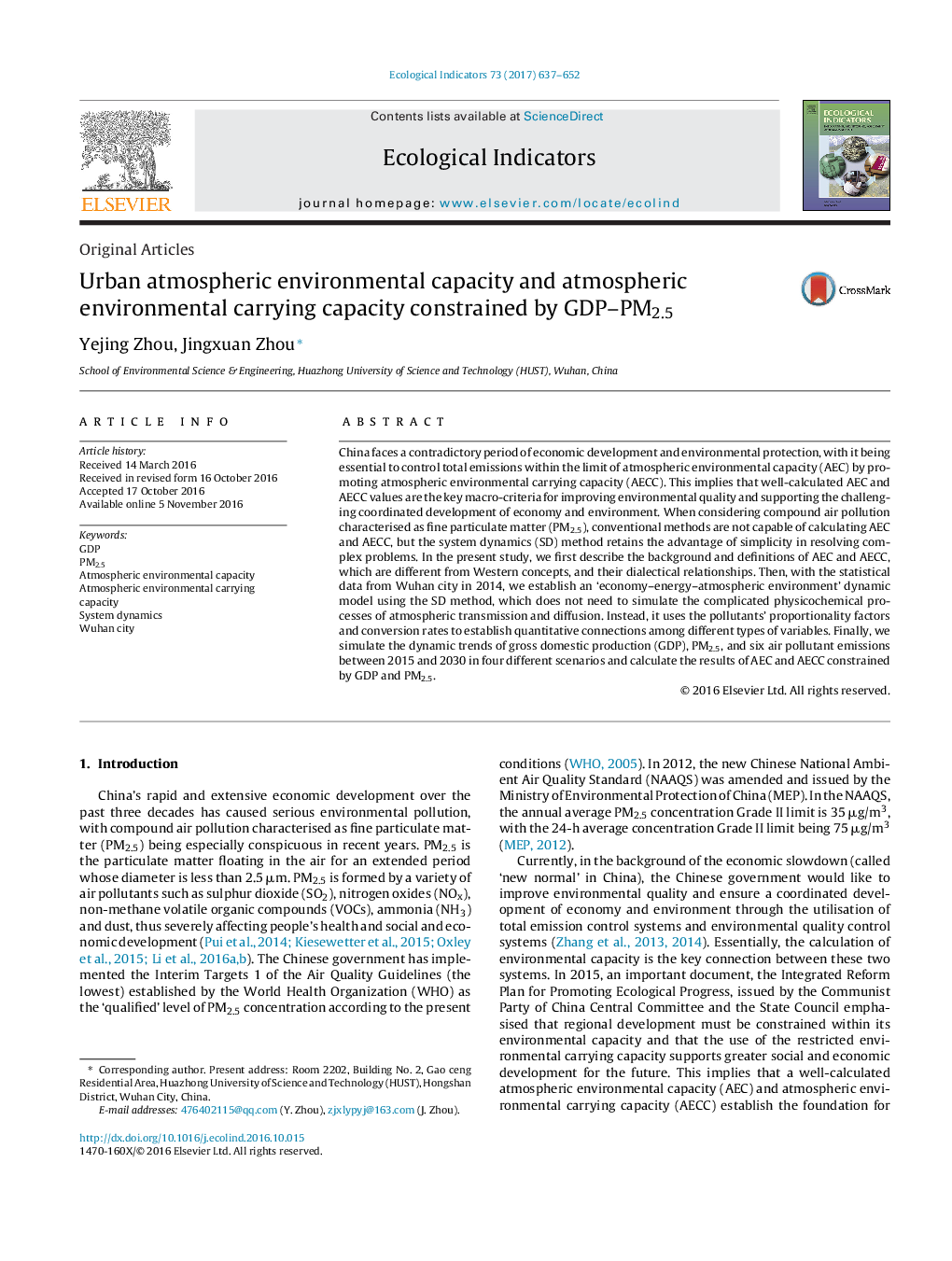| Article ID | Journal | Published Year | Pages | File Type |
|---|---|---|---|---|
| 6292664 | Ecological Indicators | 2017 | 16 Pages |
Abstract
China faces a contradictory period of economic development and environmental protection, with it being essential to control total emissions within the limit of atmospheric environmental capacity (AEC) by promoting atmospheric environmental carrying capacity (AECC). This implies that well-calculated AEC and AECC values are the key macro-criteria for improving environmental quality and supporting the challenging coordinated development of economy and environment. When considering compound air pollution characterised as fine particulate matter (PM2.5), conventional methods are not capable of calculating AEC and AECC, but the system dynamics (SD) method retains the advantage of simplicity in resolving complex problems. In the present study, we first describe the background and definitions of AEC and AECC, which are different from Western concepts, and their dialectical relationships. Then, with the statistical data from Wuhan city in 2014, we establish an 'economy-energy-atmospheric environment' dynamic model using the SD method, which does not need to simulate the complicated physicochemical processes of atmospheric transmission and diffusion. Instead, it uses the pollutants' proportionality factors and conversion rates to establish quantitative connections among different types of variables. Finally, we simulate the dynamic trends of gross domestic production (GDP), PM2.5, and six air pollutant emissions between 2015 and 2030 in four different scenarios and calculate the results of AEC and AECC constrained by GDP and PM2.5.
Keywords
Related Topics
Life Sciences
Agricultural and Biological Sciences
Ecology, Evolution, Behavior and Systematics
Authors
Yejing Zhou, Jingxuan Zhou,
